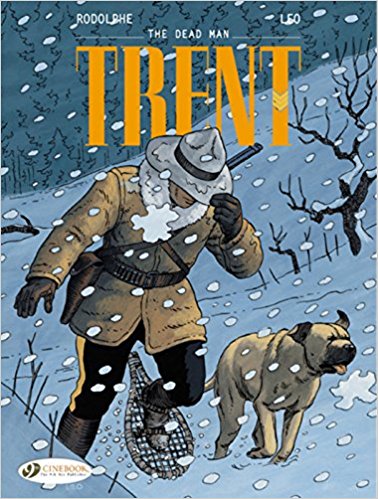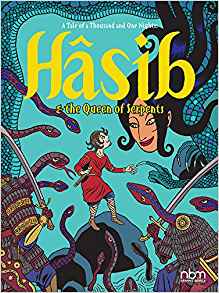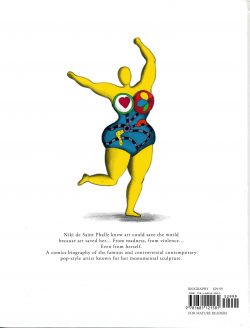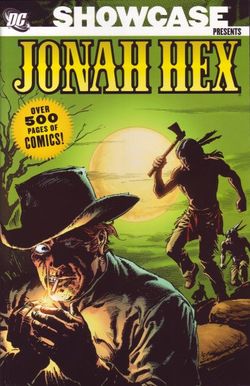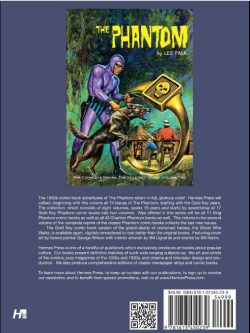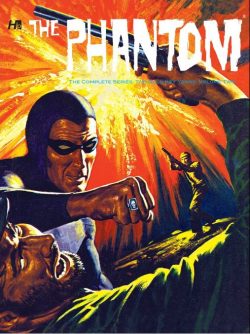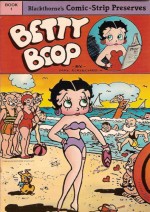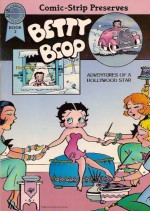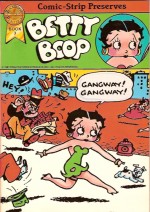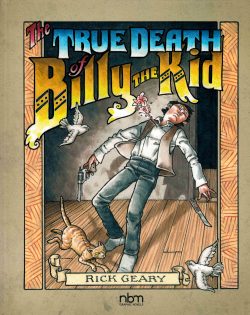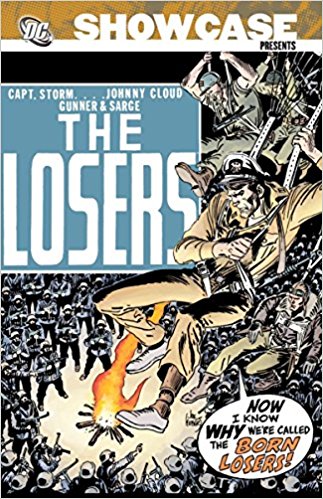
By Robert Kanigher, Russ Heath, Joe Kubert, Ross Andru & Mike Esposito, John Severin, Ken Barr & various (DC Comics)
ISBN: 978-1-4012-3437-9-8
Team-ups are a valuable standby of comics, and war stories have always thrived by mixing strange bedfellows together. None more so than this splendid composite: another woefully neglected series in today’s modern print/digital graphic novels marketplace.
The Losers were an elite unit of American soldiers formed by amalgamating three old war series together. Gunner and Sarge (later supplemented by the Fighting Devil Dog Pooch) were Pacific-based Marines; debuting in All-American Men of War #67, (March1959) and running for fifty issues in Our Fighting Forces (#45-94, May 1959-August 1965), whilst Captain Johnny Cloud was a native American fighter pilot who shot down his first bogie in All-American Men of War #82.
The “Navaho Ace†flew solo until issue #115, (1966) and entered a brief limbo until the final component of the Land/Air/Sea team was filled by Captain Storm, a disabled PT Boat skipper who fought on despite his wooden left leg in his own eponymous 18-issue series from 1964 to 1967. All three series were created by comicbook warlord Robert Kanigher.
The characters had all pretty much passed their individual use-by dates when they were teamed-up as guest-stars in a Haunted Tank tale in 1969 (G.I. Combat #138 October), but these “Losers†found a new resonance together in the relevant, disillusioned, cynical Vietnam years and their somewhat nihilistic, doom-laden group anti-hero adventures took the lead spot in Our Fighting Forces #123 for a run of blistering yarns written by Kanigher and illustrated by such giants as Ken Barr, Russ Heath, Sam Glanzman, John Severin and Joe Kubert.
With the tag-line “even when they win, they lose†the team saw action all over the globe, winning critical acclaim and a far-too-small but passionate following. This magnificent monochrome tome collects that introductory tale from the October 1969 G.I. Combat and the complete formative run of suicidal missions from Our Fighting Forces #123-150 (January /February 1970-August/September 1974), after which comicbook messiah Jack Kirby took over the series for a couple of years and made it, as always, uniquely his own. For that seminal set you must see Jack Kirby’s The Losers Omnibus (no really, you must. That’s an order, Soljer…)
Kanigher often used his stories as a testing ground for new series ideas, and G.I. Combat #138 (October 1969) introduced one of his most successful. ‘The Losers!’, illustrated by the magnificent hyper-realist Russ Heath, saw the Armoured Cavalry heroes of the Haunted Tank encounter a sailor, two marines and grounded pilot Johnny Cloud, each individually and utterly demoralised after negligently losing all the men under their respective commands.
Guilt-ridden and broken, the battered relics were inspired by tank commander Jeb Stuart who fanned their sense of duty and desire for vengeance until the crushed survivors regained a measure of respect and fighting spirit by uniting in a combined suicide-mission to destroy a Nazi Radar tower…
By the end of 1969 Dirty Dozen knock-off Hunter’s Hellcats had long outlived their shelf-life in Our Fighting Forces and with #123 (January/February 1970) evacuated in the epilogue ‘Exit Laughing’ which segued directly into ‘No Medals No Graves’, illustrated by Scottish artist Ken Barr (whose stunning work in paint and line has graced everything from Commando Picture Library covers, through Marvel, DC and Warren, to film, book and TV work) and picked up the tale as Storm, Cloud, Gunner and Sarge sat in enforced, forgotten idleness until the aforementioned Lieutenant Hunter recommended them for a dirty, dangerous job no sane military men would touch…
It appears Storm was a dead ringer for a British agent – even down to the wooden leg – and the Brass needed the washed-up sailor to impersonate their vital human resource. The only problem is that they wanted him to be captured, withstand Nazi torture for 48 hours and then break, delivering damaging disinformation about a vast commando raid that wouldn’t be happening…
The agent would do it himself but he was actually dead…
And there was even work for his despondent companions as a disposable diversionary tactic added to corroborate the secrets Storm should hopefully betray after two agonising days…
Overcoming all expectation the “Born Losers†triumphed and even got away intact, after which Ross Andru & Mike Esposito became the regular art team in #124 when ‘Losers Take All’ showed how even good luck was bad, after a mission to liberate the hostage king of a Nazi-subjugated nation saw them doing all the spectacular hard work before losing their prize to Johnny-come-lately regular soldiers…
‘Daughters of Death’ in #125 found the suicide squad initially fail to rescue a scientist’s children only to blisteringly return and rectify their mistakes, Of course, by then the nervous tension had cracked the Professor’s mind, rendering him useless to the Allied cause…
‘A Lost Town’ opened with The Losers undergoing a Court Martial for desertion. Reviled for allowing the obliteration of a French village, they faced execution until an old blind man and his two grandkids revealed what really happened in the hellish conflagration of Perdu, whilst in ‘Angels Over Hell’s Corner’ a brief encounter with a pretty WREN (Women’s Royal Navy Service) in Blitz-beleaguered Britain drew the unit into a star-crossed love affair that even death itself could not thwart…
In a portmanteau tale which disclosed more details of the events which created The Losers, Our Fighting Forces #128 described the ‘7 11 War’ wherein a hot streak during a casual game of craps presaged disastrous calamity for any unlucky bystander near to the Hard Luck Heroes, after which ‘Ride the Nightmare’ saw Cloud endure horrifying visions and crack up on a mission to liberate a captive rocket scientist, before the team again became a living diversion in #130’s ‘Nameless Target’. However, by getting lost and hitting the wrong target, The Losers gifted the Allies with their greatest victory to date…
John Severin inked Andru in OFF #131, in preparation to taking over the full art chores on the series, and ‘Half a Man’ hinted at darker, grittier tales to come when Captain Storm’s disability and guilty demons began to overwhelm him. Considering himself a jinx, the sea dog attempted to sacrifice himself on a mission to Norway but had not counted on his own brutal will to survive…
Back in London, Gunner & Sarge were temporarily reunited with ‘Pooch: the Winner’ (#132 by Kanigher & Severin), prompting a fond if perilous recollection of an exploit against the Japanese in the distant Pacific. However, fearing their luck was contagious, the soldiers sadly decided the beloved “Fighting Devil Dog†was better off without them…
Dispatched to India in #133’s ‘Heads or Tails’, The Losers were ordered to assassinate the “the Unholy Three†– Japanese Generals responsible for untold slaughter amongst the British and native populations. In sweltering lethal jungles, they only succeeded thanks to the determined persistence and sacrifice of a Sikh child hiding a terrible secret.
Our Fighting Forces #134 saw them brutally fighting from shelled house to hedgerow in Europe until Gunner cracked. When even his partners couldn’t get him to pick up a gun again it took the heroic example of indomitable wounded soldiers to show him who ‘The Real Losers’ were…
Issue #135 began a superb extended epic which radically shook up the team after ‘Death Picks a Loser’. Following an ill-considered fortune telling incident in London, the squad shipped out to Norway to organise a resistance cell, despite efforts to again sideline the one-legged Storm. They rendezvoused with Pastor Tornsen and his daughter Ona and began by mining the entire village of Helgren, determined to deny the Nazis a stable base of operations.
Even after the Pastor sacrificed himself to allow the villagers and Americans time to escape, the plan stumbled when the explosives failed to detonate and Storm, convinced he was a liability, detonated the bombs by hand…
Finding only his wooden leg in the flattened rubble, The Losers were further stunned when the vengeful orphan Ona volunteered to take the tragic sailor’s place in the squad of Doomed Men…
The ice-bound retreat from Helgren stalled in #136 when she offered herself as a ‘Decoy for Death’ leading German tanks into a lethal ambush, after which Cloud soloed in a mission to the Pacific where he found himself inspiring natives to resist the Japanese as a resurrected ‘God of the Losers’…
Reunited in OFF #138, the Bad Luck Brigade became ‘The Targets’ when sent to uncover the secret of a new Nazi naval weapon sinking Allied shipping. Once more using Ona as bait they succeed in stunning fashion, but also pick up enigmatic intel regarding a crazy one-eyed, peg-legged marauder attacking both Enemy and Allied vessels off Norway…
Our Fighting Forces #139 introduced ‘The Pirate’, when a band of deadly reivers attacked a convoy ship carrying The Losers and supplies to the Norwegian resistance. Barely escaping with their lives the Squad was then sent to steal a sample of a top secret jet fuel but discovered the Sea Devil had beaten them to it.
Forced to bargain with the merciless mercenary for the prototype, they found themselves in financial and combat competition with an equally determined band of German troops who simply wouldn’t take no for an answer…
‘Lost… One Loser’ revealed that Ona had been with Storm at the end and was now plagued by a survivor’s guilty nightmares. Almost convincing her comrades that he still lived, she led the team on another mission into Norway, the beautiful traumatised girl again used herself as a honey trap to get close to a German bigwig and found incontrovertible proof that Storm was dead when she picked up his battered, burned dog-tag…
Still troubled, she commandeered a plane and flew back to her home to assassinate her Quisling uncle in #141’s ‘The Bad Penny’, only to be betrayed to the town’s German garrison and saved by the pirate who picked that moment to raid the occupied village for loot.
Even with the other Losers in attendance the Pirate’s rapacious rogues were ultimately triumphant but when the crippled corsair snatched Ona’s most treasured possession, the dingy dog-tag unlocked many suppressed memories and Storm (this is comics: who else could it be?) remembered everything…
Answers to his impossible survival came briskly in OFF #142 and ‘½ a Man’ concentrated on the Captain’s struggle to be reinstated. Shipping out to the Far East on a commercial vessel, he was followed by his concerned comrades and stumbled into an Arabian insurrection with three war-weary guardian angels discreetly dogging his heel.
Back with The Losers again in #143, Storm was soon involved in another continued saga as ‘Diamonds are for Never!’ found the Fatalistic Five sent to Africa to stop an SS unit from hijacking industrial diamonds for their failing war effort. However, even after liberating a captured mine from the enemy, the gems eluded the team as a pack of monkeys made off with the glittering prizes…
Hot on their trail in ‘The Lost Mission’ the pursuers stumble onto a Nazi ambush of British soldiers and determine to take on their task – demolishing an impregnable riverside fortress…
Despite being successful the Squad are driven inland and become lost in the desert where they stumble into a French Foreign Legion outpost and join its last survivor in defending ‘A Flag for Losers’ from a merciless German horde and French traitor…
Still lost in the trackless wastes they survived ‘The Forever Walk!’ in #146, battling equally-parched Nazis for the last precious drops of water and losing one of their own to a terrifying sandstorm…
In ‘The Glory Road!’ the sun-baked survivors encountered the last survivor of a German ambush, but British Major Cavendish seemed unable to differentiate between his early days as a star of patriotic films and grim reality and when a German patrol captures them all the mockery proves too much for the troubled martinet…
Again lost and without water, in #148 ‘The Last Charge’ saw The Losers save a desert princess and give her warrior father a chance to fulfil a prophecy and die in glorious battle against the Nazi invaders, whilst #149 briefly reunited the squad with their long-missing member before tragically separating again in ‘A Bullet for a Traitor!’
This volume concludes with ‘Mark our Graves’ in #150 as The Losers linked up with members of The Jewish Brigade (a special British Army unit) who all paid a steep price to uncover a secret Nazi supply dump…
Although a superbly action-packed and moving tale, it was an inauspicious end to the run and one which held no hint of the creative culture-shock which would explode in the pages of the next instant issue when the God of American Comicbooks blasted in to create a unique string of “Kirby Klassics 
With covers by Joe Kubert, Frank Thorne and Neal Adams, this grimly efficient, superbly understated and beautifully rendered collection is a brilliant example of how war comics changed forever in the 1970s and proves that these stories still pack a TNT punch few other forms of entertainment can hope to match.
© 1969, 1970, 1971, 1972, 1973, 1974, 2012 DC Comics. All Rights Reserved.
